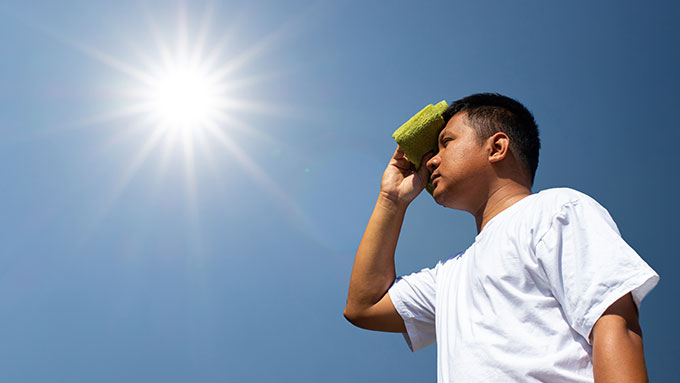
A major risk of being in the summer heat is heat stroke. According to the CDC, heat stroke is a severe illness occurring when body temperature rises to 106 degrees within 10-15 minutes.
Heat stroke starts early and can be prevented. Below is what the progression of heat stroke looks like and the action you should take to prevent the worst-case scenario.
Heat Cramps
Heat stroke in its early form starts with Heat Cramps. This consists of muscular pain and spasms in abdominal muscles or legs from the loss of water/salt in sweat. To control heat cramps, you should get to a cool place and drink 4 oz., of water every 15 minutes until feeling better.
Heat Exhaustion
If you don't treat heat cramps it may progress to Heat Exhaustion. This is when the loss of fluid has started to cause decreased blood flow to your organs. Cool and pale skin are prevalent along with heavy sweating, dilated pupils, headache, nausea, and dizziness. This can be treated by getting to a cool place and slowly replacing fluids. You also will need to lie down and elevate your feet.
Heat Stroke
The final progression is Heat Stroke. This is a medical emergency. Heat stroke is life-threatening and requires immediate and aggressive treatment. Heat stroke causes your body’s systems to fail which can result in death.
You will notice hot and red skin that has stopped sweating with pinpoint pupils and high body temperature. To treat heat stroke get to a cool place, lie down, elevate your feet, and call 911.
The most important thing is prevention. By drinking water when being active or outside in the heat, you can prevent this progression and not have to worry.
.
Source: Centers For Disease Control
